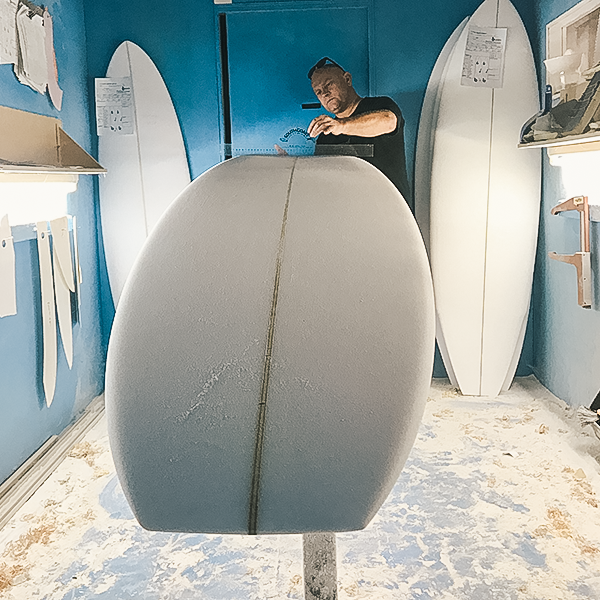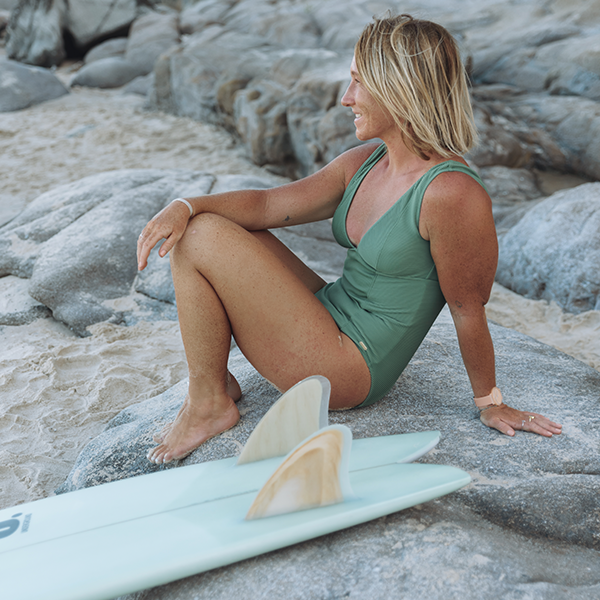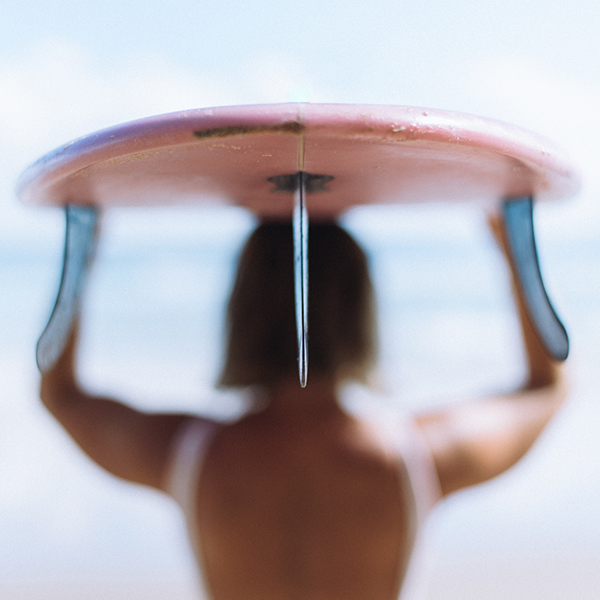U. COMMUNITY

Firewire’s product development is focused on three things: The exclusive use of epoxy resins and EPS foam cores, achieving lighter and stronger surfboards through sandwich construction, and optimizing flex to enhance performance.
Firewire boards are lighter and stronger than traditional PU surfboards and much of that weight saving and strength comes from their proprietary blank construction. Unlike regular polyurethane cores, which weigh 2.5 - 3lb per cubic foot, the FUTURE SHAPES TECHNOLOGY (FST) and DIRECT DRIVE (DD) cores are built from 1lb EPS foam. A 3mm layer of high density aerospace composite is added through a vacuum process to stabilize the core and increase strength. The end result is an incredibly light weight and durable blank unique to Firewire.
EPS Foam Core: Firewire is 100% committed to EPS (Expanded Polystyrene) for our shaped cores. Not only is this material infinitely more environmentally friendly than PU (polyurethane) foam, but the excess EPS material is recycled. In addition, the 1lb core is an essential part of Firewire’s high performance. The way in which materials travel through different mediums is a direct result of their density AND shape. For example, a baseball and tennis ball are roughly the same shape and size, but behave completely differently when thrown. Similarly, a 1lb foam core allows for rapid direction changes and overall responsiveness during rail–to–rail turns.
Hi Density Deck skins: Future Shapers Technology uses hi-density deck skins on the top and bottom of each board. These material have a high strength to weight ratio as well as helping to control the flex characteristics. In addition to their very high impact strength, these skins demonstrate almost zero materials fatigue over time. As a result, unlike traditional PU foam boards, Firewire blanks are not only lighter weight and stronger, but the flex characteristics remain intact for a considerable amount of time, long after traditional blank materials have fatigued and lost their spring.
Epoxy Resins: Firewire boards are built with epoxy resins, which are not only far stronger than polyurethane based resins, but emit only 2% of the VOC’s (volatile organic compounds) versus regular PU resin. Unlike a PU based laminating facility, you can walk anywhere in the Firewire factory without a mask and without a headache. Furthermore clean up requires simple citrus cleaners.
Balsa Wood Rails: The specific construction and choice of balsa for the rails is vital to Firewire’s flex characteristics and performance. While the balsa looks like a thin veneer on a completed surfboard, in fact it is over half an inch thick, built from 3 x 4mm strips laminated together and running the length of the surfboard perimeter, creating an incredibly lightweight, durable structure and incidentally a great buffer for those inevitable rail bashes when surfing. The balsa ensures that the degree AND rate of flex is controlled to maximize performance.
Lamination: With the inherent strength of our custom blanks and the epoxy resin systems, all Firewire shortboards are laminated with a single 4oz deck both top and bottom, except for the FE606P and FE608P Step Up Guns. All other models over 6’10” have a double 4oz top deck and a single 4oz bottom. Given the fact that some Longboarders actually prefer additional weight, they've added a layer of 6oz to select longboards and these are delivered to retail with a special sticker clearly showing the lamination schedule.
High Density Fin Inserts: All Firewire Surfboards have high density inserts surrounding the fin boxes for both FCS and Futures. This is a far stronger method of attachment than anchoring the boxes to the top deck as is the case with the regular FCS installation, or letting them float directly in the EPS. This also allows the tail to flex more than a system anchored to the top deck.
The 1lb Firewire EPS core contains a lot of air. It is NOT a hollow core, but as you can imagine a blank that weighs 1lb has far more air inside than a blank weighing 3lbs. As an added precaution to allow the core to expand and contract during extreme changes in temperature or air pressure, the vent allows air to pass back and forth between the core and the exterior of the board, while preventing water from entering. The GORE–TEX membrane does not require any maintenance, other than kept free of wax in order to breathe. You can imagine the stresses and strains on any surfboard materials when you take a board on a hot day and jump into 50° water. While some may argue that the vent is not essential, they believe that it does prolong the life of the board.







